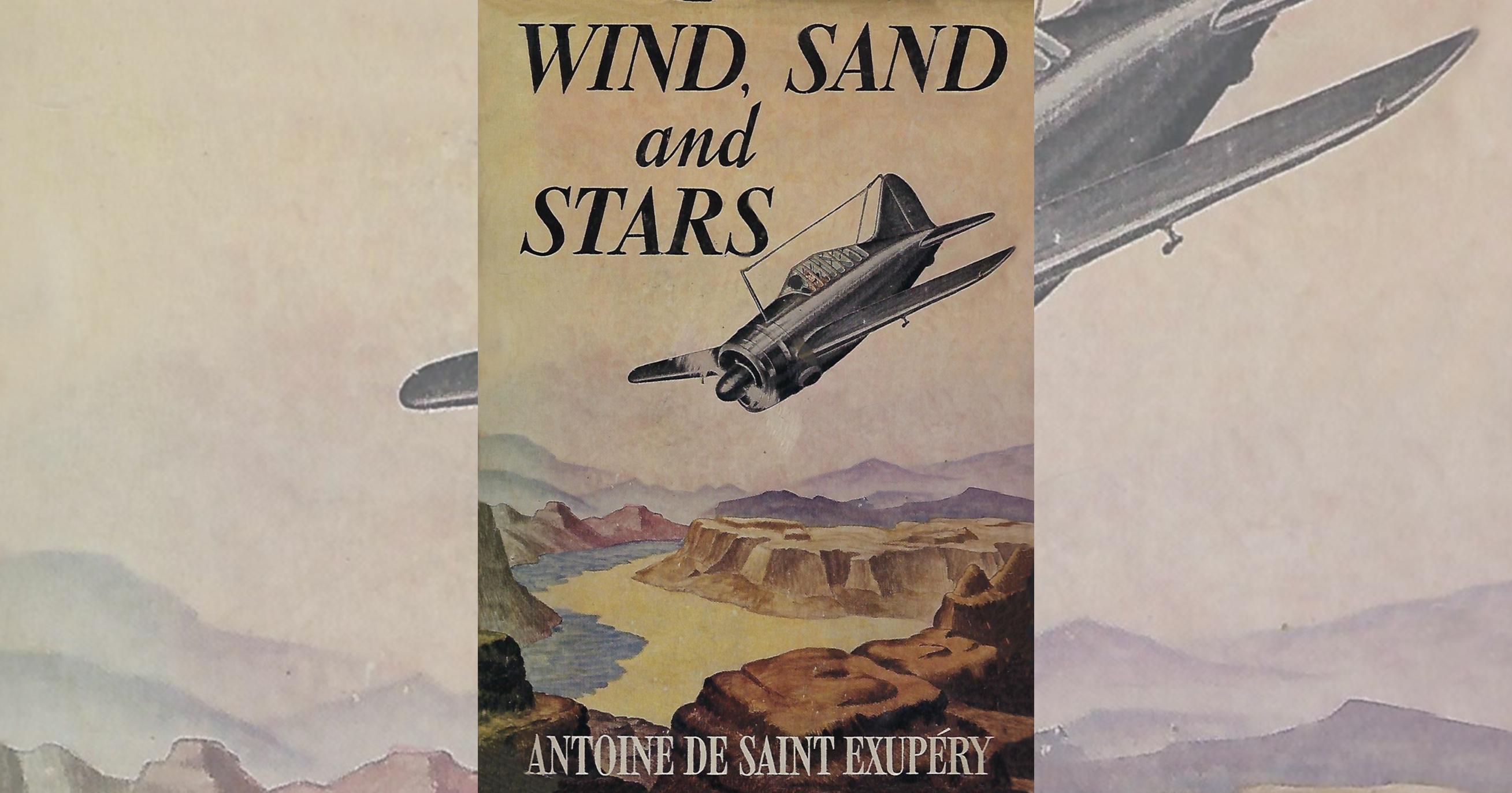Wind, Sand and Stars by Antoine de Saint-Exupéry
Among the many honors accorded Antoine de Saint-Exupéry—“Saint-Ex,” as he is often called—comes a memorable one from National Geographic, which listed Wind, Sand and Stars as one of the top 10 adventure books of all time. Saint-Ex is generally beloved for his heroic flights—including his last one, as an overage P-38 pilot. His name is inscribed on a plaque in that most exclusive hall of honor, the French Pantheon, but more important he has had the truest reward for any author: the continued sale through the years of all of his works.
First and foremost of these, of course, is his 1943 work The Little Prince. Reputedly sold in greater quantities than any book other than the Bible and Gone With the Wind, it has been translated into hundreds of languages. Ostensibly a children’s book, it is a deeply philosophical work, as well as one of the first to use an extraterrestrial being as a major sympathetic character.
For the lover of language, for those who enjoy truly poetic philosophical presentations with a central core of aviation knowhow, Wind Sand and Stars is a marvelous book. It gives authors something to aspire to, and pilots something to think about. The book is structured in a simple if not entirely cohesive manner. It begins with a discussion of “The Craft” of being an aviator, and those who remember their first independent assignment as a pilot are sure to empathize as the author undertakes his first airmail flight on a desert route terminating in Casablanca. He tells us how the self-doubts and fears of the novice pilot are amplified by the indifference of his experienced colleagues. Then in a brilliant contrast, he relates how fortunate the pilot is compared to the “petty bourgeois.” He rides in a bus to the airport over rainy streets with those unfortunates, “talking about their illness, money and shabby domestic affairs,” and realizes along the way that “the magic of the craft has opened a world in which I shall have to confront, within two hours, the black dragons and the crowned crests of a coma of blue lightnings, and when night has fallen I, delivered, shall read my course in the stars.” In others words, he feels in his guts what it means to be a pilot.
Saint-Ex comes closer to the modern aviator audience in the next chapter, where he discusses “The Men” who are his idols for having flown the Casablanca-Dakar line across the Sahara Desert. One is Jean Mermoz, with whom he had flown in Argentina, who “had studied the face of the sands” and now must “learn the contours of the peaks, those crags whose scarfs of snow flutter restlessly in the winds, whose surfaces are bleached white in the storms, whose blustering gusts sweep through the narrow walls of their rocky corridors and force the pilot to a sort of hand-to-hand combat.”
The following chapter, “The Tool,” is perhaps the most rhapsodic and the most disappointing. While it soars in descriptive passages, they are not anchored to the wonderful world of Breguets, Latécoères and Farmans that we know he encountered. This section describes how the aircraft links nature to the pilot when he writes, “Young barbarians, still marveling at our new toys—that is what we are.” But as he is not writing for the pilot audience, he fails to count a single rivet.
The next four chapters find Saint-Ex at his best, relating his spiritual quest to his physical surroundings. His powerful descriptions of the sheer energy of a storm, the stark naked beauty of the Sahara, the simplicity of the Bedouin natives in their element, the insane nobility of a French sergeant at an isolated outpost, or the vain attempts to tame the ferocious Moor tribesmen are the best of their kind. From all this he is filled again with “a barbaric joy,” for he had “understood a murmured monosyllable of this secret language, had sniffed the air and known what was coming, like one of those primitive men to whom the future is revealed in such faint rattlings; it was that I had been able to read the anger of the deserts in the beating wings of a dragonfly.”
Chapter Eight, “Prisoner of the Sand,” is the heart of this book, and doubtless the inspiration for The Little Prince. Saint-Ex crash-lands his handsome Caudron Simoun in the desert in the course of a long-distance flight from Paris to Saigon. He calls André Prévot his “mechanic” in the book, but Prévot also served as his navigator. (Given that they crashed in the Libyan Desert after 19 hours of flight on the trip to Saigon, Prévot was perhaps a better mechanic than navigator.) The writing is as beautiful as his survival techniques are bizarre. Saint-Ex is in extremis and his musings are at their height when he and Prévot are rescued at the last moment by a passing Bedouin tribesman.
The final chapter is less poetry and more political commentary on the early days of the Spanish Civil War. While interesting, it is somehow strangely out of place with the rest of the book.
In the final analysis, rereading Wind, Sand and Stars was for me, aging Philistine that I am, a bit sticky going. Further, I believe that many of those who love aviation writing may find Wind, Sand and Stars a touch too poetic for the rigors of flight and survival that Saint-Exupéry portrays. For the fan of aviation literature, his Night Flight and Flight to Arras are far better books. But for fans of the poetry of flight, nothing can compare to Wind, Sand and Stars.
Originally published in the September 2008 issue of Aviation History. Subscribe today!.





